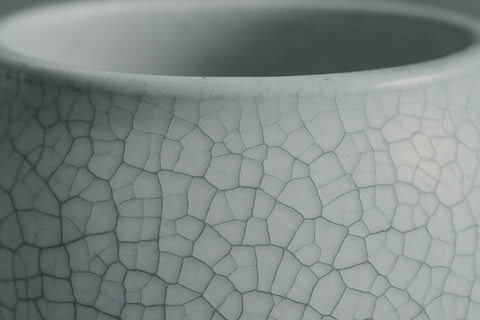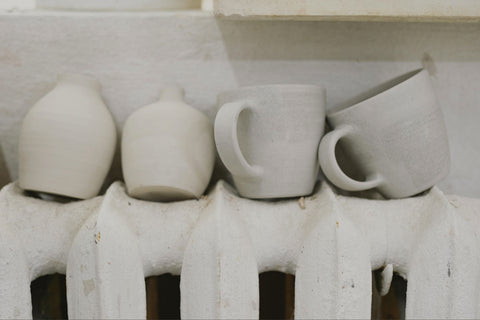introduction: is crazing just a crack in the glaze or a crack in pottery's safety?
while crazing can offer a unique aesthetic, especially in decorative pieces not meant for food use, it’s important to separate artistic intent from functional concerns. this post isn’t about dismissing intentional crazing in ornamental work. it’s about why, when it comes to tableware, crazing is more than just visual.

section 1: what is crazing?
crazing is a web of fine cracks that appear on the surface of glazed pottery. these usually affect only the glaze layer and don’t always mean the piece is structurally unsound. still, they’re often visible and can sometimes be felt by touch. since crazing isn’t always obvious, inspecting foodware with a magnifying glass is a smart habit before sending pieces to customers.
section 2: why crazing makes pottery not safe for food
bacteria growth – cracks can trap bacteria that are hard to remove, creating a health risk.
difficulty in cleaning – the fine cracks make it nearly impossible to clean thoroughly, especially on dinnerware used often.
potential for leaching – crazing can allow glaze or clay ingredients to migrate into food, especially if non-food-safe materials were used. using food-safe glazes every time is essential.
section 3: causes of crazing
thermal expansion mismatch – if the glaze and clay body expand and contract at different rates, stress builds and the glaze cracks. potters who make their own glazes should calculate thermal expansion for both glaze and clay to avoid this.
inappropriate glaze fit – if a glaze doesn’t align with the clay body, crazing can occur. making glaze test tiles on your actual clay helps prevent issues before they reach your finished work.
rapid temperature changes – sudden shifts in temperature, like placing a hot piece on a cold surface, can lead to thermal shock and crazing. I always include care instructions that mention this
aging – even with perfect technique, crazing can show up over time as pieces are exposed to temperature and moisture changes
section 4: crazing vs crackle
they may look similar, but only one is intentional. crackle glaze is a design choice, and crazing is an unintended flaw. both can compromise the safety of food-related pottery.
conclusion
crazing isn’t just a surface detail. when it comes to food use, it’s a safety issue. bacteria, leaching, and cleaning problems are all reasons to take it seriously. with testing and awareness, potters can make work that’s not just beautiful but safe to use every day.





